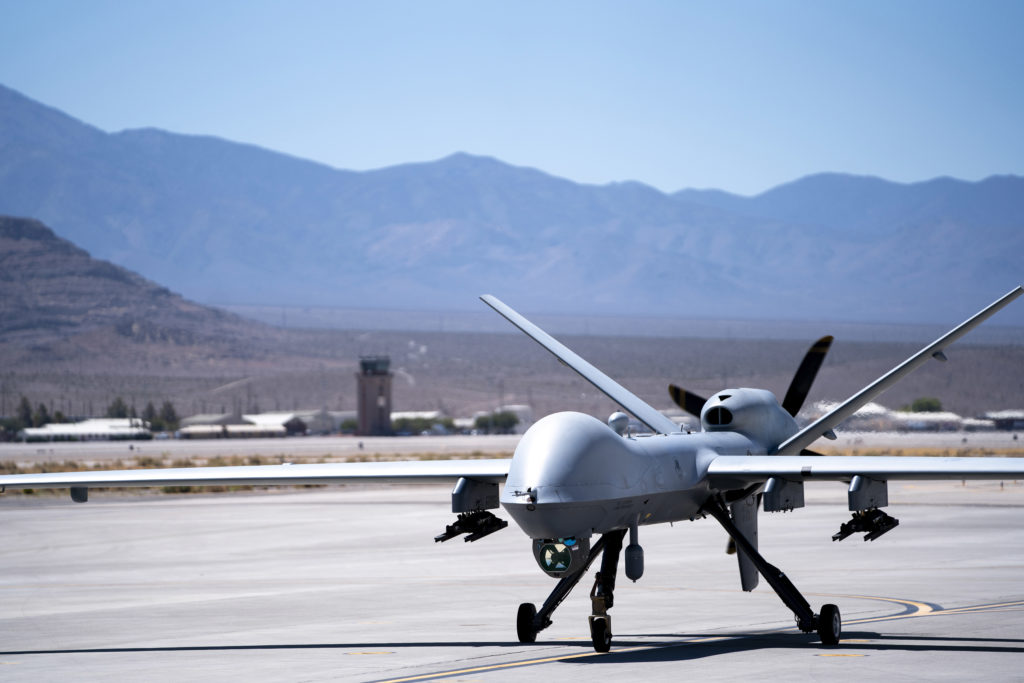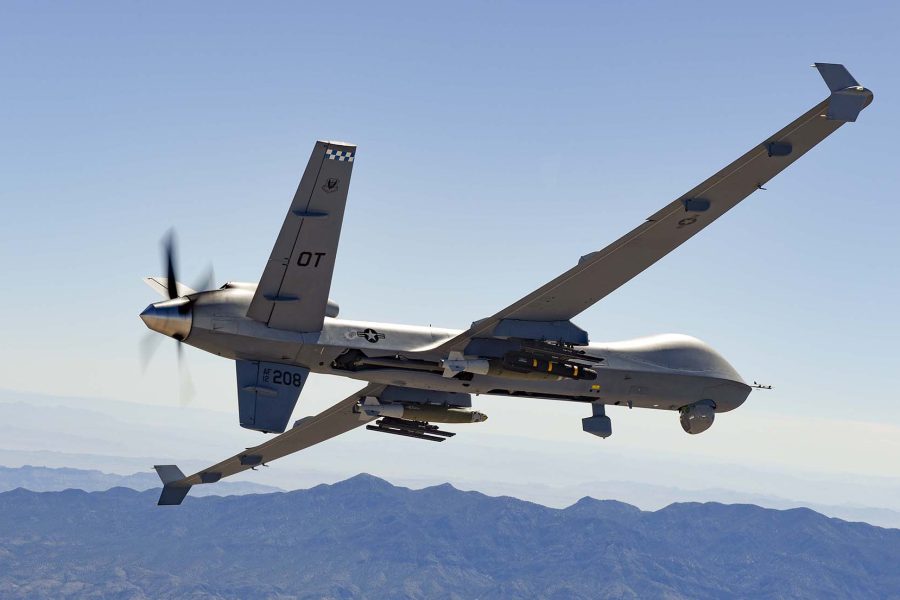A previously undisclosed crash of an Air Force MQ-9 crash in Africa in February stemmed from the pilot’s failure to follow the takeoff guidelines and to properly recover the descending aircraft, according to a newly released report.
The Feb. 11 incident, which occurred at an undisclosed location, caused no injuries or damage to civilian property, but it led to the complete loss of a $25.8 million unmanned aerial vehicle. The Reaper, belonging to the 432nd Wing at Creech Air Force Base in Nev., struck the ground just beyond the runway’s departure end.
The Air Force has frequently used Reapers’ ISR capabilities for the U.S.’s counterterrorism efforts across the Middle East and Africa for more than 15 years.
The investigation highlighted two main causes of the crash: the pilot’s oversight in completing the throttle adjustment according to the checklist, and a lack of situational awareness to increase the throttle control in time. At the time of the accident, the MQ-9 was operated remotely by a pilot and a sensor operator from the 12th Expeditionary Special Operations Squadron.

At 8:30 p.m. UTC, the pilot announced that the Reaper’s Automatic Takeoff and Landing Capability (ATLC) was on and continued to engage the ATLC seconds later, which commanded engine power to 100 percent. However, the pilot did not complete the checklist step to set the throttle to 100 percent leaving it at flight idle (0 percent). This meant there wasn’t enough power during the transition from automated to manual control of the aircraft.
“The cause of the mishap was the pilot’s failure to comply with the takeoff checklist guidance to move the throttle control to 100 percent after initiating an ATLC takeoff, causing thrust to decrease at the transition from ATLC to manual control,” the report noted.
The aircraft took off around 8:31 p.m. While climbing, the pilot indicated plans to turn off the ATLC sooner than expected and continued to disengaged it, triggering warnings of a rapid drop in engine performance. A little more than 30 seconds after takeoff, the sensor operator questioned why they were climbing slowly. Although the aircraft continued to climb briefly, it soon began to descend, leading the sensor operator to mistakenly believe they were experiencing a mechanical failure.
The pilot didn’t begin to increase the throttle until 22 seconds after turning off the ATLC. When the aircraft continued to fall, the pilot declared an emergency and just one second before the Reaper hit the ground, was able to command the throttle to 100 percent.
But by then, it was far too late to regain control, and the drone crashed at 8:32 p.m., just 44 seconds after takeoff, with a nose-low position and at slow airspeed. The landing gear was still retracting, and the engine was “near idle thrust,” resulting in insufficient power before impact.
“The pilot failed to accurately analyze the resulting situation in time and subsequently increased the throttle control too late to recover from a low altitude thrust-deficient descent, resulting in the aircraft impacting the ground,” the investigation concluded.
The analysis also revealed that if the pilot had responded appropriately to the decreasing thrust and adjusted the throttle within 18 seconds of the transition to manual control, the crash could likely have been avoided, as demonstrated by a simulator recreation.
“The Mishap Pilot should have prioritized analyzing the situation and flying the Mishap Aircraft, over transmitting the emergency radio call,” the board noted. “It is reasonable to expect that MP analysis of the situation and execution of the appropriate response should have required less than 18 seconds.”
The investigation also identified two other contributing factors to the accident.
Ineffective crew resource management created distractions during ground operations, limiting the crew’s ability to complete pre-takeoff checklists effectively. The report details that around 8:16 p.m., the mission support officer tried to discuss the Takeoff and Landing Data known as TOLD, but the pilot interrupted, saying, “we’ll get it on the roll.” Before taxiing, the crew was also “initially uncertain what data to load into the Mishap Aircraft” due to confusion with similar callsigns.
Additionally, the pilot turning off the ATLC just 21 seconds after takeoff at a low altitude, further complicated the situation. Although the pilot didn’t break any rules by doing this, waiting until reaching a higher altitude to switch to manual control would have provided more time to handle any problems.
“Delaying turning ATLC off until a higher altitude would have provided more time to recover manually from any anomalies during the transition from automatic to manual control,” the report noted. The report added that the 12th Special Operations Squadron crews were accustomed to turning ATLC off at a low altitude, due to “airspace requirements at Cannon AFB driving turns shortly after takeoff.”
The Air Force has suffered a string of MQ-9 mishaps over the last two years.
In January 2023, a contractor crashed a drone, causing $16 million in damages in California. In May 2023, engine failure led another MQ-9 to crash at an undisclosed location in Africa, where it was destroyed. And in September, another contractor was killed after she walked into the propeller of an MQ-9 during ground testing. The service has also disclosed at least one other MQ-9 crash this year—U.S. Air Forces in Europe announced that a Reaper crashed in Poland in January.
